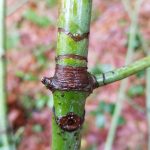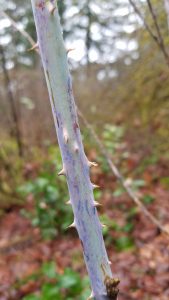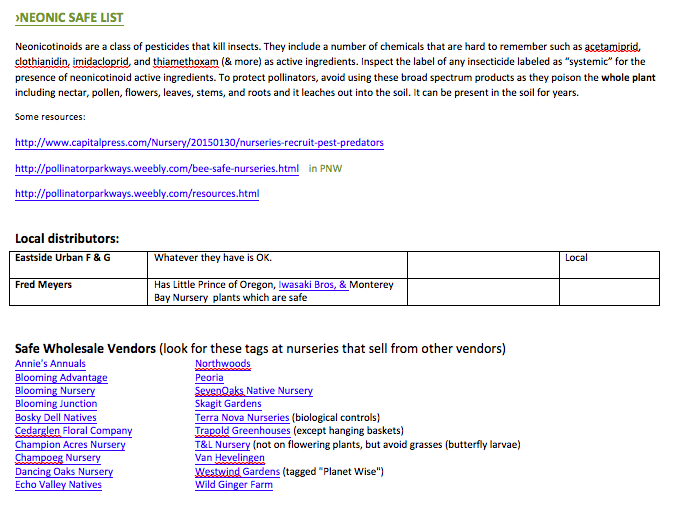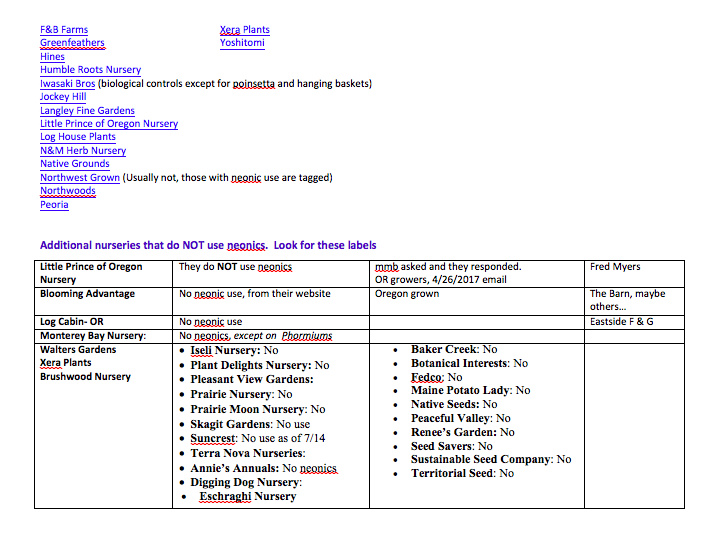
The rain did not deter a group of hardy naturalists from spending the afternoon in the LBA Woods on Tuesday to learn about the ecology and key native plants of the upland forest ecosystem. Our guide, wildlife biologist Marian Bailey, shared her ample knowledge of more than twenty different native species–everything from Douglas-firs, Western Hemlocks, Western Red-cedars, and Big-Leaf Maples to the delicate fronds, steps, vines, buds, and blossoms of understory plants. And she shared her helpful and often humorous tricks for remembering certain botanical names and plant parts.

Against a backdrop of blooming Osoberry, Marian Bailey describes how important the cascades of flowers of this species are to hummingbirds and other early pollinators.

Lucky for our group, the LBA Woods is full of tree snags (dead, topless trees) and–even luckier for our group–one of the snags was being hammered by the pileated woodpecker during our walk. Though this is the largest woodpecker in North America, it’s not easily or often observed.

Big-Leaf Maple’s small, distinctive “bracelet” of leaf scars on its branch.

Salmonberry, Thimbleberry, Huckleberry, Himalayan Blackberry? No, this is the Black-cap raspberry with its distinctive whitish-lavender-green vines.

Catkins of the Beaked Hazel and a drop of rain.
Thank you, Marian and everyone for making our first walk such a success!
Next walks…
Tuesday, April 17 at 10 a.m.: Margaret McKenny Birthday Walk guided by Anne Kilgannon
Sunday, April 22 at 11 a.m.: Earth Day Walk, guided by Marian Bailey.
Each two-hour walk will cover trails not followed on previous walk. Meet near the picnic shelter in LBA Park. Walks are rain or shine. Dress warmly. Walks are on gentle terrain and the walking pace is “naturalist shuffle” slow.
NOTE: Part of Marian’s talk today included the critical role of pollinators in our ecosystems and the dangers of a group of pesticides knows as neonicotinoids, which indiscriminately kill “pest” and beneficial insects and have been linked to the decimation of our bee and butterfly populations. I’ve included a screen shot of Marian’s list of sources for Neonicotinoid-free/pollinator-safe plants. If you would like a more useful digital copy of Marian’s list, please e-mail mariaruthbooks@comcast.net and I will send you the list with hot links.


